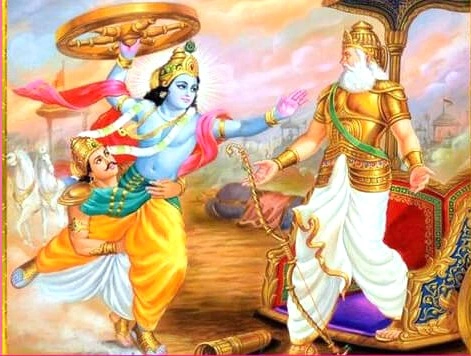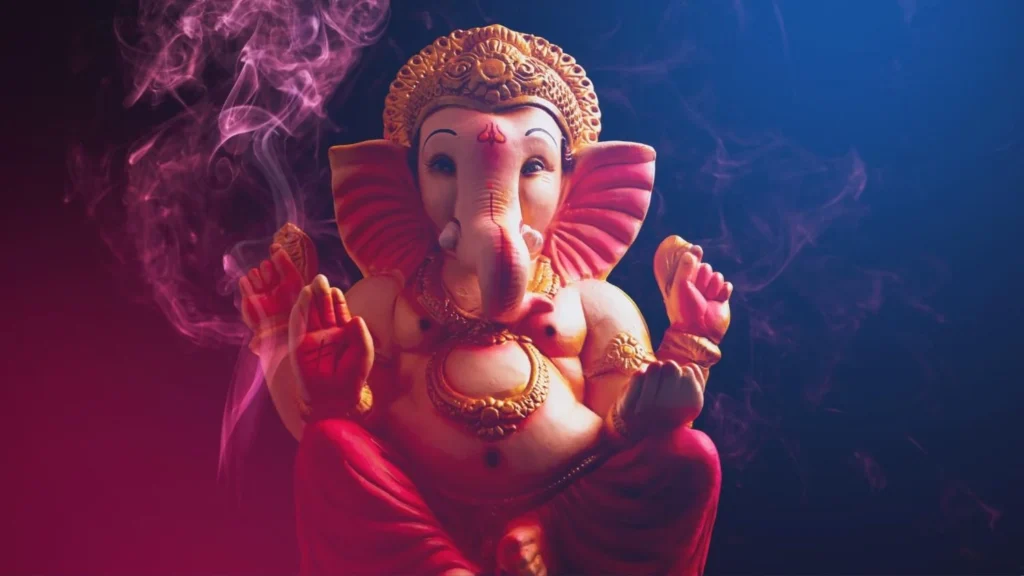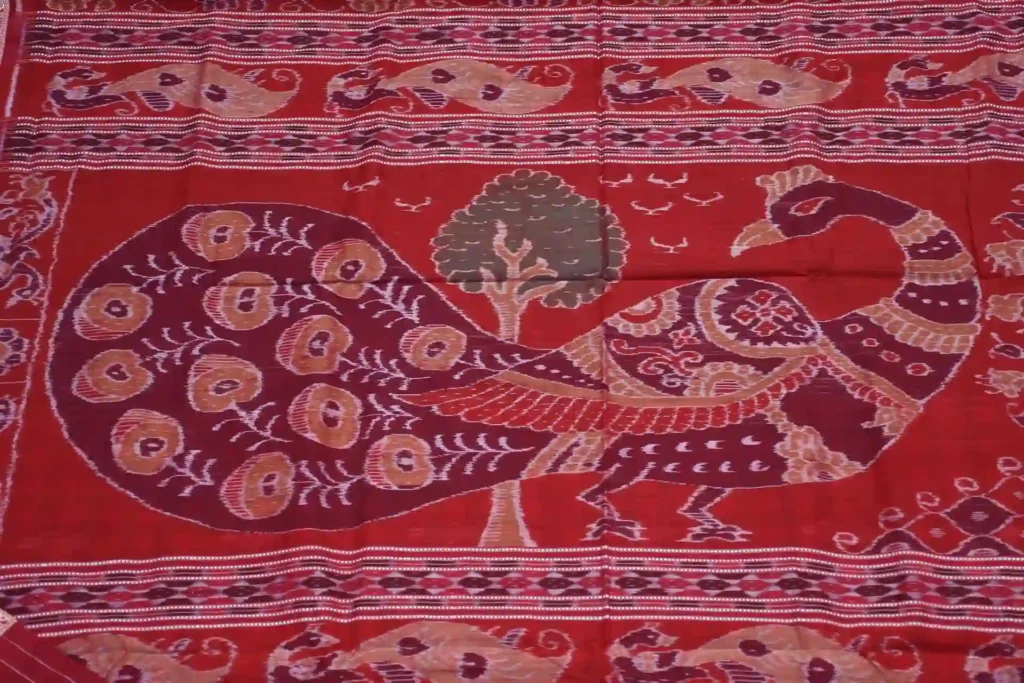
Introduction – Why Sambalpuri Saree is More Than Just an Outfit
Have you ever worn something that felt like history woven into fabric? Well, that’s exactly what a Sambalpuri Handloom saree offers. Originating straight from the heart of Western Odisha, these sarees are not just garments—they are living art forms. In fact, with vibrant colors, symbolic motifs, and handwoven precision, Sambalpuri sarees celebrate culture, craftsmanship, and sustainability.
Moreover, whether it’s a cotton Sambalpuri saree for everyday elegance or a Sambalpuri silk saree for weddings, every drape tells a story of Odisha’s artistry. So, let’s dive deep into their history, weaving traditions, motifs, and ultimately, why they remain a must-have in every Indian wardrobe.Table of Contents
History of Sambalpuri Saree – Weaving Through Centuries
The roots of the Sambalpuri handloom saree trace back to the 12th century, when the Bhulia community migrated to Odisha after the fall of the Chouhan Empire. They carried with them the intricate bandha kala (tie-dye technique), which eventually evolved into Odisha’s unique double ikat style.
At first, these sarees featured earthy vegetable dyes and simple motifs for daily wear, known as “Bhulia Kapta.” Gradually, weaving spread across Sambalpur, Bargarh, Balangir, and Sonepur, with each region adding its own unique touches.
Later, the 20th century brought a renaissance as master weavers like Radhashyam Meher introduced more complex motifs and improved dyeing techniques. Furthermore, when Indira Gandhi began wearing Sambalpuri sarees, their popularity skyrocketed nationwide. Finally, in 2008, the saree earned the Geographical Indication (GI) tag, safeguarding its authenticity and artisans’ livelihood.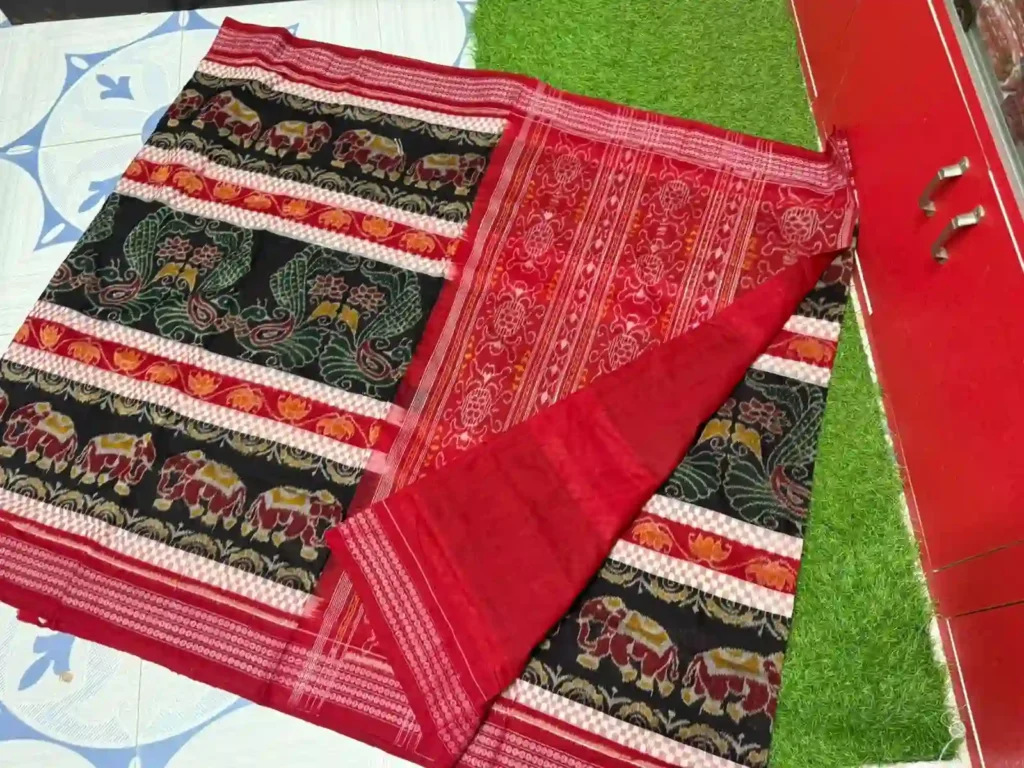
The Weaving Process – A Symphony of Skill and Patience
What truly makes a Sambalpuri Handloom saree stand apart is its ikat technique, where both warp (longitudinal threads) and weft (horizontal threads) are tied and dyed before weaving. As a result, this ensures that patterns appear identical on both sides, a rare mastery in textiles.
Step-by-step artistry:
- Design sketching – Motifs are drawn on graph paper, including body, border, and pallu patterns.
- Tying and dyeing – Yarn is tied with cotton threads to resist dyes, dipped in natural vegetable dyes, then untied and re-dyed multiple times.
- Spinning – Dyed yarns are rolled onto bobbins using traditional spinning wheels.
- Weaving – Expert weavers align warp and weft on pit looms, weaving for 6–8 days for a cotton saree, while double ikat silk versions may take weeks.
Types of Sambalpuri Sarees – Something for Every Occasion
Sambalpuri sarees are versatile, ranging from light cottons to luxurious silks. To begin with, let’s look at the major types:
-
Sambalpuri Cotton Saree – Comfort with Elegance
Firstly, perfect for daily wear or office attire, these sarees feature breathable fabric and subtle motifs. Moreover, their earthy shades make them ideal for summers.
-
Sambalpuri Silk Saree – Regal and Timeless
Secondly, known locally as Sambalpuri Patta saree, these are crafted from fine mulberry silk. In fact, they shine with bold contrasts, intricate motifs, and glossy finishes, making them a bridal favourite.
Additionally, the pata sarees are special ceremonial silks, often gifted during weddings. They showcase elaborate temple borders, conch shells, and chakra motifs.
-
Bomkai and Barpali Variants
Finally, while Bomkai sarees add extra embroidery-like motifs, Barpali sarees are known for their geometric precision and narrative-inspired borders.
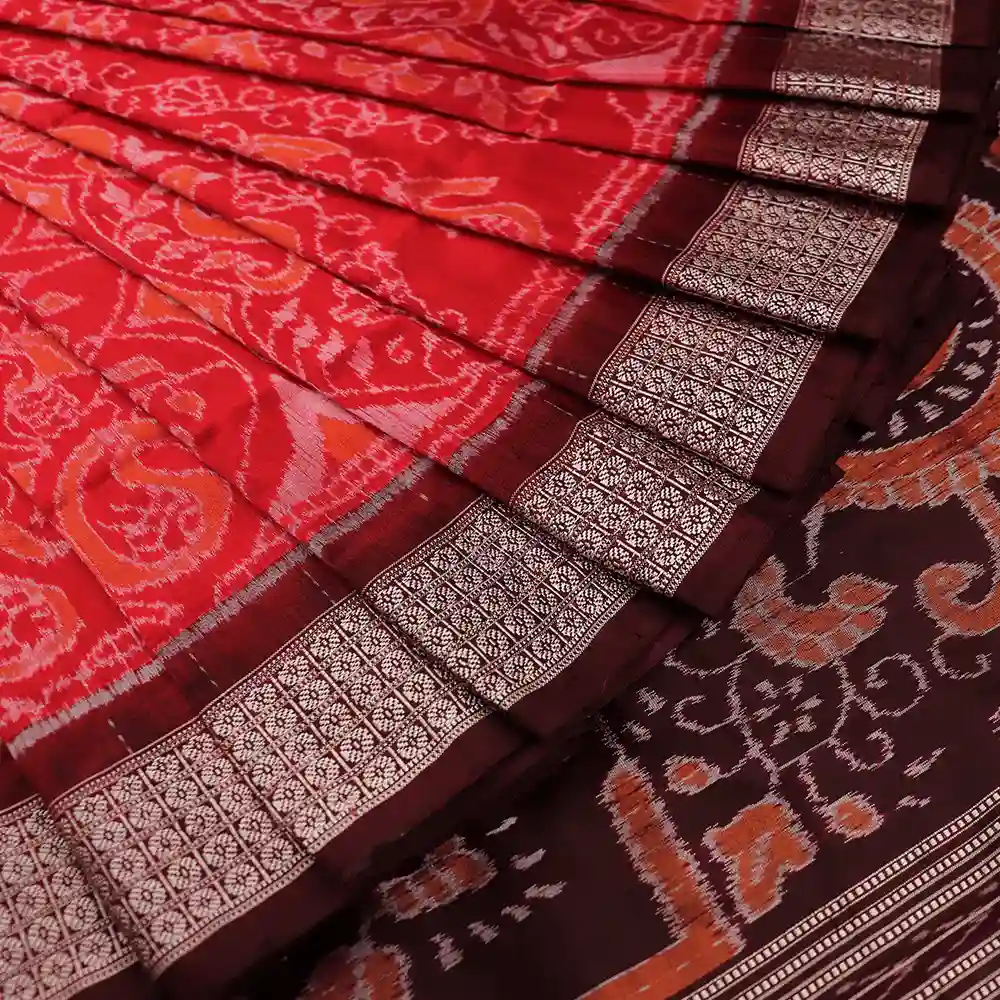
Motifs and Designs – Stories Woven in Thread
The motifs in a Sambalpuri saree design are deeply symbolic, reflecting Odisha’s cultural and natural heritage.
- Shankha (Conch) – Purity and divinity
- Chakra (Wheel) – Prosperity and dharma, inspired by the Konark Sun Temple
- Phula (Flowers) – Beauty and fertility
- Animal motifs – Tigers, elephants, fish and birds symbolizing nature’s balance
- Tribal patterns – Inspired by local folklore and folk art
Cultural Significance – More Than a Saree
A Sambalpuri Handloom saree is more than attire; it’s an heirloom. In fact, in Odisha, brides wear Sambalpuri silks as part of their trousseau. Moreover, during festivals like Nuakhai (the harvest festival), Rath Yatra, and Raja, Odia women proudly drape these handlooms as a mark of cultural pride.
Furthermore, the sarees also symbolize sustainable fashion. Since they rely on natural dyes, handloom weaving, and rural artistry, they support thousands of families in Western Odisha. Thus, wearing one is a way of preserving heritage while embracing eco-conscious fashion.Buying Authentic Sambalpuri Sarees – Online & Offline Tips
- Look for the GI tag and Handloom Mark.
- Buy directly from Odisha handloom emporiums in Bhubaneswar, Sambalpur, Puri, or Cuttack.
- Explore verified online stores like Boyanika, Utkalika, or Priyadarshini Handloom.
- Engage with local markets in Bargarh and Sambalpur for direct weaver interactions.
Styling Tips – Modern Elegance Meets Tradition
A Sambalpuri saree’s versatility makes it fit for both traditional and modern fashion.
- Festivals & Weddings – Pair silk or pata sarees with gold jewellery and fresh jasmine flowers.
- Office Wear – Choose cotton sarees in subtle shades with minimal jewellery.
- Fusion Style – Drape it with a crop top, belt, or contrasting blouse for a chic Indo-western look.
- Celebrity Style – From Indira Gandhi to modern fashion icons, Sambalpuri sarees continue to inspire designers globally.

